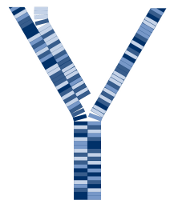Team:Yale
From 2012.igem.org
| Line 1: | Line 1: | ||
| + | <!--- The Mission, Experiments ---> | ||
| + | |||
| + | {| style="color:#1b2c8a;background-color:#0c6;" cellpadding="3" cellspacing="1" border="1" bordercolor="#fff" width="62%" align="center" | ||
| + | !align="center"|[[Team:Yale|Home]] | ||
| + | !align="center"|[[Team:Yale/Team|Team]] | ||
| + | !align="center"|[https://igem.org/Team.cgi?year=2012&team_name=Yale Official Team Profile] | ||
| + | !align="center"|[[Team:Yale/Project|Project]] | ||
| + | !align="center"|[[Team:Yale/Parts|Parts Submitted to the Registry]] | ||
| + | !align="center"|[[Team:Yale/Modeling|Modeling]] | ||
| + | !align="center"|[[Team:Yale/Notebook|Notebook]] | ||
| + | !align="center"|[[Team:Yale/Safety|Safety]] | ||
| + | !align="center"|[[Team:Yale/Attributions|Attributions]] | ||
| + | |} | ||
| + | |||
{|align="justify" | {|align="justify" | ||
|You can write a background of your team here. Give us a background of your team, the members, etc. Or tell us more about something of your choosing. | |You can write a background of your team here. Give us a background of your team, the members, etc. Or tell us more about something of your choosing. | ||
| Line 17: | Line 31: | ||
| | | | ||
|align="center"|[[Team:Yale | Team Yale]] | |align="center"|[[Team:Yale | Team Yale]] | ||
| - | |||
| - | |||
| - | |||
| - | |||
| - | |||
| - | |||
| - | |||
| - | |||
| - | |||
| - | |||
| - | |||
| - | |||
| - | |||
| - | |||
|} | |} | ||
Revision as of 21:04, 3 October 2012
| Home | Team | Official Team Profile | Project | Parts Submitted to the Registry | Modeling | Notebook | Safety | Attributions |
|---|
| You can write a background of your team here. Give us a background of your team, the members, etc. Or tell us more about something of your choosing. | |
ProjectsThe Yale 2012 iGEM Team is currently pursuing: MAGE in a naturally competent organism: Multiplex Automated Genome Engineering (MAGE), a technique for rapidly generating genomic diversity using the recombination ability of the λ-phage ssDNA-binding protein β, has to date been introduced only in E. coli. These cells must be transformed via electroporation for each MAGE cycle to facilitate efficient uptake of mutagenic oligonucleotides, but this process kills a significant portion of otherwise viable cells. We aim to introduce MAGE in naturally competent bacteria such as B. subtilis and A. baylyi by testing homologs of β and uniquely optimizing the technique within each species to avoid the death/recovery time inherent with electroporation. In addition, we are developing CAD-MAGE to predict the diversity produced by MAGE.
| |
| Team Yale |
 "
"

